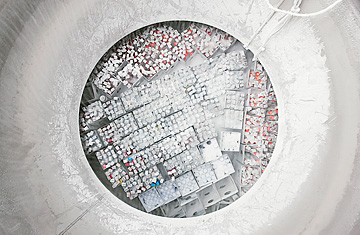
For Shari Ann, good canadian sperm was hard to find. As a single woman in her late 30s, she wanted to get pregnant and knew she didn't have much time. When she began to hunt for the perfect donor, however, she was frustrated by the selection. In her hometown of Quebec City, she found only a few Jewish candidates--a must for Shari Ann (who asked to go by her first name to protect her family's privacy)--and none of them were suitable. So she called a clinic in Toronto that contacted a sperm bank in Virginia, and there she found her genetic Prince Charming: tall, athletic, smart, handsome and Jewish. She bought five vials of his sperm; her twin boys are now 7 years old.
Prince Charming's real name is Ben Seisler, though Shari Ann might have never known that, since U.S. donors can choose to be anonymous. But one day in 2005, Seisler grew curious about the results of his biological generosity--and well he might have been, because he'd been generous indeed. He plugged his donor number into the Donor Sibling Registry and was put in touch with not only Shari Ann's family but also at least 20 others. Overall, he counts more than 70 offspring in the U.S. and abroad, and given the number of donations he made over the course of three years when he was in his early 20s, he calculates there could be as many as 140.
Now 34 and married, Seisler broke the news of the scope of his procreation to his then fiance Lauren on a 2011 Style channel documentary about sperm donors. Lauren--no surprise--was livid. And Ben--no surprise--struggled to explain his motivations: "I guess I was dumb. Maybe I'm being dumb now [by giving up anonymity and meeting some of the kids]. I don't know."
Seisler might have picked a better way to fess up to his future wife, but in any case, a lot of American men will sooner or later be making similar disclosures of their own. Sperm is what financial analysts call a growth sector in the American economy--and it's one of the few in which the U.S. is running a significant trade surplus. From just a handful of vials 10 years ago, American sperm exports have grown into a multimillion-dollar business. The largest sperm bank in the world, California Cryobank, recorded $23 million in sales last year, and the U.S. industry overall does an estimated $100 million in business annually. As of late 2005, ABC News reported that the top four U.S. sperm banks controlled 65% of the global market. The U.S. currently exports sperm to at least 60 countries, including Venezuela, Kenya and Thailand. California Cryobank focuses mostly on the domestic market; only 5% of its business is overseas. But Fairfax Cryobank, the second largest U.S. facility--and the place Shari Ann found Seisler's sperm--says 10% of its sales are exports, and the third largest, Xytex Cryo International, does more than a third of its business abroad. Thus far, sperm banking is a microcosm of a fertility industry that in the U.S. alone has expanded from $979 million in 1988 to a projected $4.3 billion in 2013, according to a Marketdata Enterprises study. But sperm--simple, inexpensive and easily exportable--is the iPod of the product line.
